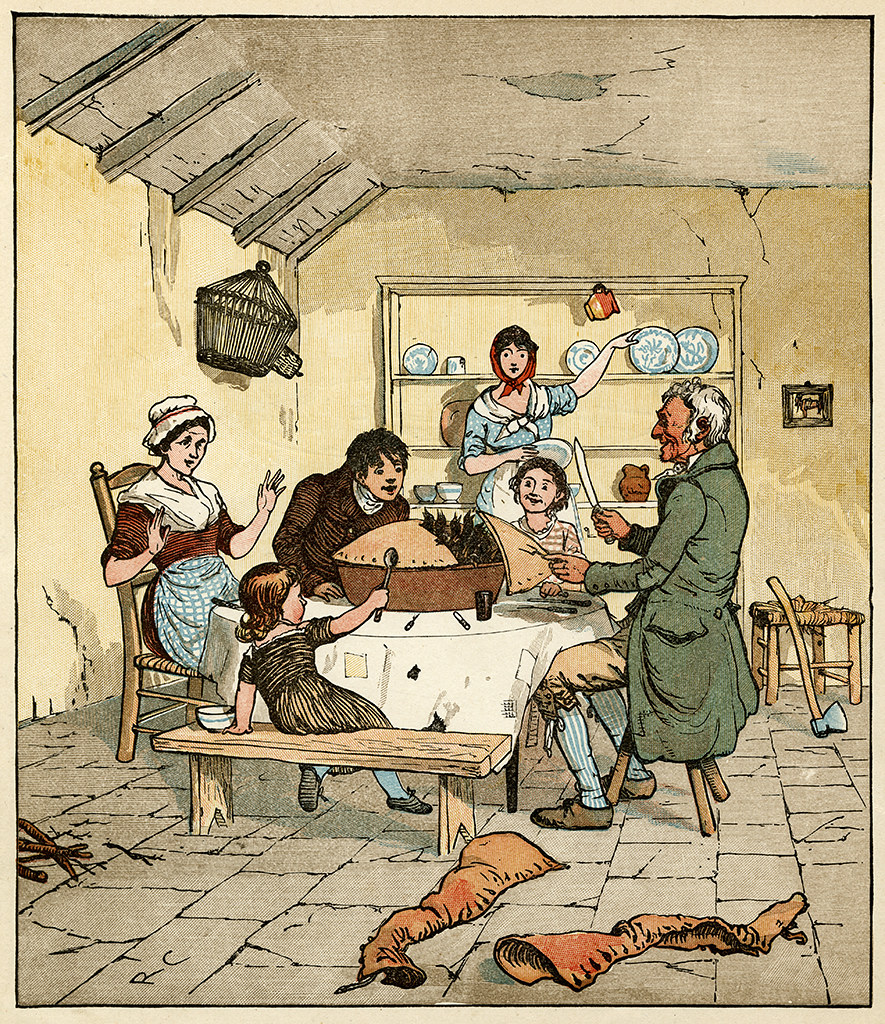#randolph caldecott
Text

Decorative design. Randolph Caldecott : a personal memoir of his early art career. 1886.
Internet Archive
530 notes
·
View notes
Text

Sketchbook no. 44 of Randolph Caldecott. Bound volume contains drawings of human figures, vehicles, plant life, landscapes, seascapes and animal life. Includes studies of seaside scenes, a preliminary for Jackanapes, and several designs used in Breton folks.
Title on tag attached to interior of volume: "R. Caldecott sketchbook, no. 44." Notes in pencil on several pages.
Rare Book Collection, Detroit Public Library
46 notes
·
View notes
Text

The Queen of Hearts, by Randolph Caldecott (1846 – 1886)
60 notes
·
View notes
Text

Randolph Caldecott illustration from the book The House that Jack Built (1878).
#randolph caldecott#art history#good morning#illustration#art#books#dawn#morning#coffee#bird#motivation#booklr#farm#1870s#countryside#book nerd#cottagecore#victorian#vintage#19th century#🎨 📚
59 notes
·
View notes
Text

"I AM A FAIRY."
From JACK AND THE BEAN-STALK
By Hallam Tennyson
Illustrated By Randolph Caldecott
published 1886
19 notes
·
View notes
Text
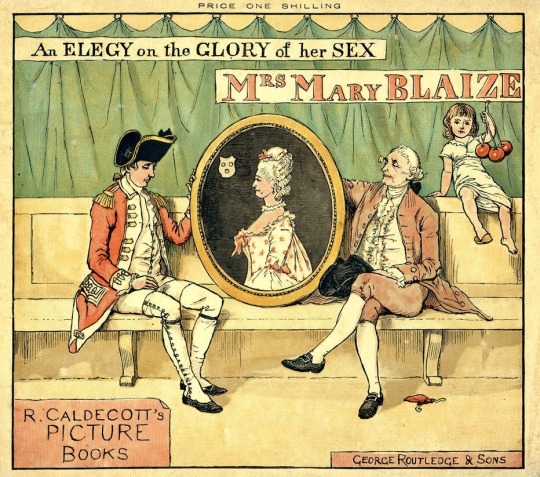
AN ELEGY ON THE GLORY OF HER SEX, MRS. MARY BLAIZE by Oliver Goldsmith. (London: Routledge, 1885) Illustrated by Randolph Caldecott.

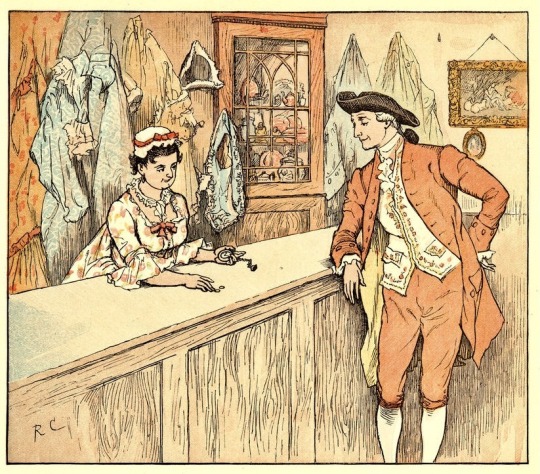


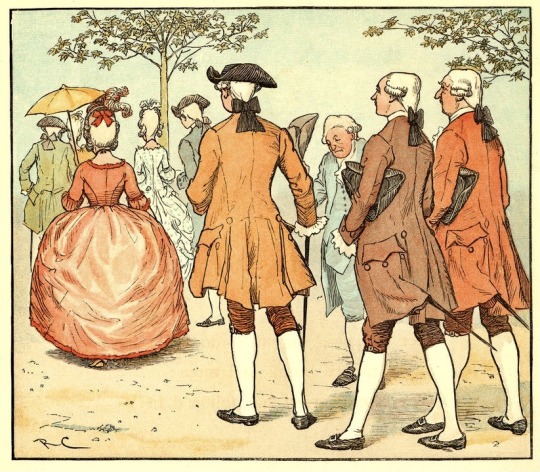

#beautiful books#book blog#books books books#book cover#books#vintage books#illustrated book#children’s book#victorian era#randolph caldecott#oliver goldsmith
20 notes
·
View notes
Text

"Stop thief! stop thief! a highwayman!"
Not one of them was mute;
And all and each that passed that way
Did join in the pursuit.
From The complete collection of pictures & songs by Randolph Caldecott
Art by Randolph Caldecott around 1887.
click for a larger view (unless you are viewing on a phone where that won't work)
11 notes
·
View notes
Text

'Three jovial huntsmen stop for a pig.' by Randolph Caldecott
3 notes
·
View notes
Text
“Babes in the Wood” is an English children’s tale created by an anonymous author and published in 1595 by Thomas Millington.
Illustrations from Randolph Caldecott’s 1879 book version.

Image: “Sore sicke they were and like to dye.”
Description: The parents: so sick they were apt to die
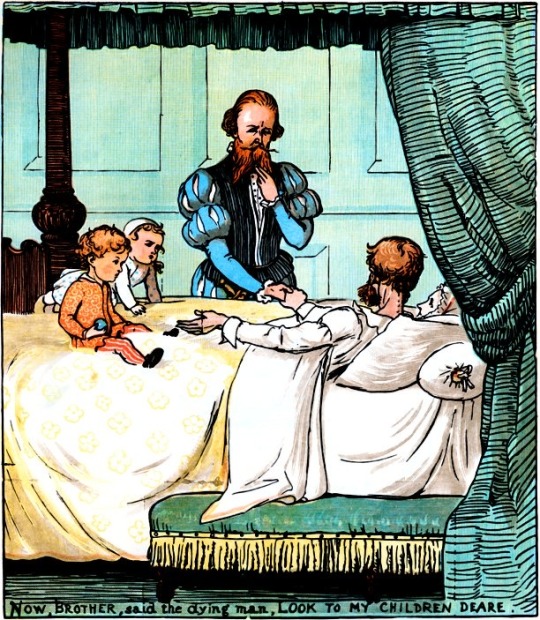
Image: “Now, brother, said the dying man, look to my children deare.”
Description: Now, brother, said the dying man, look to my children dear

Image: “With lips as cold as any stone, they kist the children small.”
Description: With lips as cold as any stone, they kiss the children small

Image: “Their parents being dead & gone, the children home he takes.”
Description: Their parents being dead and gone, the children home he takes

Image: “Away then went the pretty babes rejoycing at that tide”
Description: Away then went those pretty babes, rejoicing at that tide”

Image: “And he that was of mildest mood did slaye the other there”
Description: And he that was of mildest mood, did slaye the other there”

“These pretty babes, with hand in hand, went wandering up and down”

Image: “In one another’s arms they dyed.”
Description: In one another’s arms they died.
3 notes
·
View notes
Photo

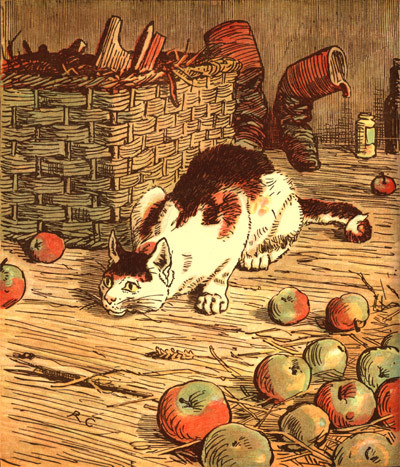


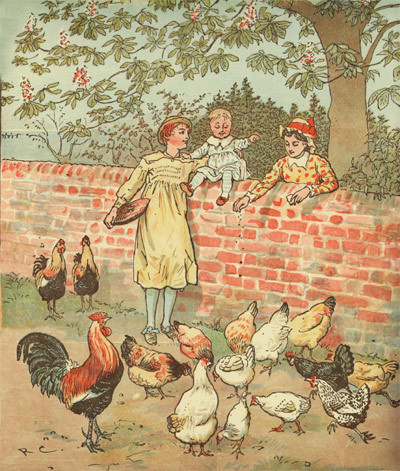
Illustrations from R. Caldecott's First Collection of Pictures and Songs by Randolph Caldecott
First published in 1900, released into the public domain in 2007 (full text)
2 notes
·
View notes
Text

🏅 #1343
1 note
·
View note
Text

The cow jumped over the moon. R. Caldecott's second collection of pictures and songs. 1895.
Internet Archive
#cow jumped over the moon#nursery rhyme#randolph caldecott#children's book illustration#nursery rhymes#nemfrog#1895#19th century
334 notes
·
View notes
Text
Title: Sing a Song for Sixpence
Author: Anonymous, traditional English nursery rhyme
Illustrator: Randolph Caldecott (English, 1846-1886)
Engraver and printer: Edmund Evans (English, 1826-1905)
Work type: Illustration
Medium: color wood engraving
Publisher: George Routledge & Sons, London
Date: 1880
Page: [p. 10]
Page size: 227 x 202 mm.
Illustration size: 203 x 171 mm.
Related text [p. 11]: When the pie was opened, the birds began to sing;
Subjects: Children’s literature; Nursery rhymes; Family; Children; Birds; Food
Interpretive notes: A man cuts open a large pastry, releasing the live birds inside – to the surprise and delight of his family.
Work rights: Work in the public domain
Image file: 23092403
Repository: Collection of Allan T. Kohl, Minneapolis College of Art and Design (MCAD), Minneapolis, Minnesota, United States
#family#children#birds#food#children’s literature#nursery rhymes#randolph caldecott#illustration#vintage illustration
0 notes
Text

The dawning of the picture-book really started a new generation of children’s books, when author/Illustrators such as Randolph Caldecott (1846-1886) started producing children’s illustrated books that took on a level of visual communication, different to children’s illustrated books of that time.
Let me explain in the words of Maurice Sendak, who expressed his inspired observations whilst reading the nursery rhyme, Bye Baby Bunting, illustrated by Randolph Caldecott.
Maurice noted in The Randolph Caldecott Treasury,
“Baby is staring with the most perplexed look at those rabbits, as though with the dawning of knowledge that the lovely, cuddly, warm costume he’s wrapped up in has come from those creatures.“
Sendak concluded that Baby Bunting’s expression seems to query,
“Does something have to die to dress me?”
I seriously doubt whether this book could be published today, as a nursery rhyme picture-book, whilst managing to avoid creating disturbing imagery in support. Children’s books have altered in content and moral standing considerably since Caldecott’s books were published.
The changing face of children’s illustrated books and more notably the contemporary picture-book, occurred as a consequence of society’s changing view of childhood, children’s role as a target audience and material deemed appropriate. (Egoff, 1981).
Sendak was also inspired by author/illustrator Tomi Ungerer who was made famous in the 1960s for his unpopularity with the children’s publishing establishment when he introduced unconventional characters, such as robbers, snakes and beggars, as compassionate protagonists in his illustrated children’s books and at the same time, publishing adult books on disturbing erotica. (Kennedy, 2008)
Still, he was a popular children’s author/illustrator in the 1960s, producing books such as The Three Robbers and No Kiss for Mother before his unpopularity propelled him into obscurity whereby his books were removed from all public libraries. (Heller, 2012).
It wasn’t until 1998 when he received a reappraisal of his career, including his children’s books, when he received the Hans Christian Andersen Award, the highest achievement for children’s book authors. (Cowan, 2015)
Ungerer, who was also renowned for his iconic advertising campaigns, political stance against the Vietnamese War and racism in the 1960’s; nuclear disarmament, plus ecological and humanitarian causes, was made the first Ambassador for Childhood and Education for the Council of Europe, in 2003. (Ungerer, 2017)
Source:
Caldecott, R. (1882). Hey Diddle Diddle and Baby Bunting R. Caldecott’s Picture Books. 1st ed. London: George Routledge and Sons.
Caldecott, R. and Billington, E. (1978). The Randolph Caldecott treasury. 1st ed. New York: F. Warne.
Cowan, S. (2015). All in One: An Interview with Tomi Ungerer.
Egoff, Sheila A (1981) Thursday’s Child: Trends and Patterns in Contemporary Children’s Literature. Chicago, IL: American Library Association)
Heller, S. (2012). The Artist Who Inspired Maurice Sendak Finally Gets His Due. [Blog] The Atlantic newsletter. Available at: https://www.theatlantic.com/entertainment/archive/2012/08/the-artist-who-inspired-maurice-sendak-finally-gets-his-due/260892/
Kennedy, R. (2008). Tomi Ungerer: Return of the Renegade Children’s Author. [online] Nytimes.com. Available at: http://www.nytimes.com/2008/07/27/arts/design/27kenn.html?pagewanted=all
Ungerer, T. (1961). The Three Robbers. 1st ed. London: Phaidon Press.
Ungerer, T. (1969). Fornicon. 1st ed. New York: Grove Inc Press.
Ungerer, T. (1998). No Kiss for Mother. 1st ed. Maryland. USA: Roberts Rinehart.
Ungerer, T. (2017). Tomi Ungerer - Official Website. [online] Tomiungerer.com. Available at: http://www.tomiungerer.com/
#illustration#childrens illustration#childrensbooks#childrens literature#randolph caldecott#tomi ungerer#maurice sendak#no kiss for mother#the three robbers#hey diddle diddle#bye baby bunting
1 note
·
View note
Text

“this is the cock that crowed in the morn…”
randolph caldecott. the house that jack built, 1876.
1 note
·
View note
Text



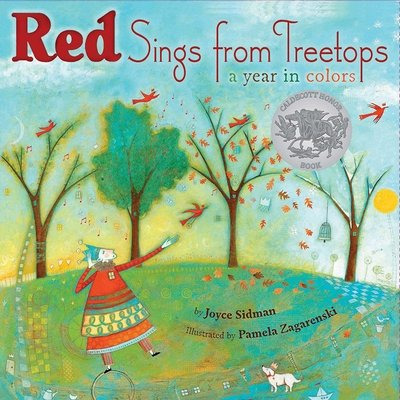
Pamela Zagarenski • Illustrations for poet Joyce Sidman's Red Sings From Treetops: A Year in Colors • Houghton Mifflin • 2009
#illustration#art#artwork#book illustration#caldecott medalist#children's literature#whimsical illustration#contemporary illustration#illustrator#sassafras and moonshine#pamela zagarenski#joyce sidman#randolph caldecott medal#award winning illustrator#kid lit#kid's book#kids' poetry
1 note
·
View note
